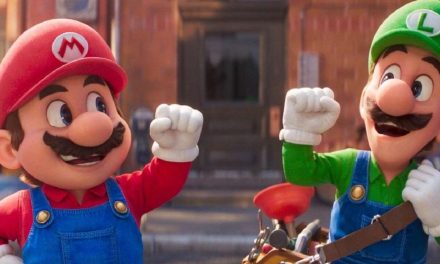Making Alita: Avoiding the “Uncanny Valley”

Photo Credit: Courtesy Twentieth Century Fox.
THS: I guess this goes into one of my next questions. It really helps to get away from that term of the “uncanny valley” when there’s a lot of visual effects involved. Going into the movie. I didn’t know that Alita the character herself was all motion capture. How did you go about getting away from that uncanny valley of Alita being so real?
Eric: Well I mean a lot of it is the design look on her face. She has those big eyes. She has all of the characteristics that easily could fall into the uncanny valley. But the thing that we really did different on this film was we played with her eyes a little bit or a lot, her pupils, her irises, to come up with a very comfortable feeling base that the proportions all still worked. The location of her eyes, to her nose and to her mouth was all very natural feeling, even though she had the bigger eyes. But what did it even more than that was the capture of Rosas (Salazar) performance. Because we were able to capture with two cameras. We used lots of performance capture cameras. Because we were able capture all of the tiny subtle detail in Rosas face and we made sure that all of that detail. The weird way her eyebrow moves when she smiles, all of those tiny little imperfections that happened in Rosa’s face, we put those into Alita and because we’ve matched those one to one and Rosa was the driving factor, it never really fell into the uncanny valley. I think when people watch the film they never think about it. By the time Alita comes downstairs and meets Doc Ido you’ve forgotten she is a CG character and she becomes a character in the film at that stage.
THS: Yeah, that’s about the point in the film, which is still super early in the movie, which is what’s so great – that’s the point in the movie where you become completely invested. I know that you have an amazing list of movies that you have worked on and, with the evolution of technology, do you feel that the work is getting easier or is it becoming a fun challenge?
Eric: Well, I mean the reality is audiences are smarter and smarter every year right? People go to the movies and they know what they’re looking at for the most part. They know what a visual effects shot is. It’s getting harder and harder to to hide visual effects especially on a movie like this when you know you know Alita is not a visual effect you can hide. You know she’s there. You know she’s CG because no one could ever play that role. So it’s always a challenge and it’s sort of the challenge that makes us drive to do these films. It’s always something that you’re striving for to make things better. It gives you a goal. It makes me want to do the next film because I’m always trying to reach, you’re always trying to outdo yourself on the last film. It’s definitely the the thing that drives you to keep going.
(Next up: the stunning visual effects of Alita.)


![Apple TV+’s “Luck” Is A Charming, Yet Underwhelming Animated Feature From the Creator of “Toy Story” [REVIEW]](https://thathashtagshow.com/wp-content/uploads/2022/08/project_20220803_1111078-01-440x264.png)

